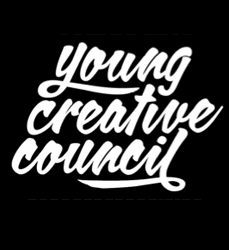A couple of weekends ago I went to the 'Digital to Analogue and Back again' workshop put on my London Metropolitan University (& Digital Shoreditch)...
The day included playing with 3D printers (all the rage right now) - printing in 3D, scanning objects in 3D and messing around with some digital imaging software. I'm going to completely geek out now, but I thought this session was wicked, having studied product design before advertising, I love seeing objects materialise into 3D from designs on scraps of paper...
3D Printing.
The first about this that amazed me was the level of detail that you can print to, this first example was printed using some 3D modelling software like Maya to create the object and then your standard but not an industrial sized 3D printer. The printer then uses a layering technique much like a normal printer... but with layers of glue and a plaster like dust... when put together they form the desired objects... if you look close enough you can see each individual layer on the objects.
I was stunned by this stuff, I thought 3D was fairly primitive, but this just blew me away. The first couple of images were created in Maya but look as if it's been plucked from the depths of the ocean somewhere. Anyone want to join me in a business producing rare 'fake' coral? The level of detail is phenomenal.
It's also possible to make some more solid object that aren't so fragile, take this key door stop for example. Talking to one of the developers this stuff does take a long time to print... From what I could gather something like this could take up to 25 hours for this one object... and that's with no idea of the costs... practical, perhaps not, cool... definitely.
It's also possible to create objects a lot quicker but with a lower level of detail using styrofoam, take this Ostrich head for example, having played, sanded and crafted this stuff myself, it's quite nice to know that a 3D printer can do most of the hard work for you and just leave a little bit of sanding for you to do at the backend.
3D Scanning & Digital Image Mapping.
The process was really quite simple, you can build a basic rig for under £500 but, the price does reflect the quality, it's built from a projector and a laser pointer device of some description, I'm not up on the tech but it really was quite basic, you then needed a convertor to rig and map the imaging... don't ask me about that either.
Once you've got the gear, you just sit down, it's like having your photo taken, but with a REALLY REALLY bright flash that stays on for a couple of seconds... The more still you stay the better quality the render.
The technology finds it quite difficult to map dark areas and reflective surfaces hence why there are some loose areas that end up looking quite 'bitty'. To be honest I quite liked this effect and ended up playing with some more styles. It gives the effect of the sandman, as if you were being blown away like little particles like dust.
The interesting thing is that once the image is digitalised you can pan round it, as you can see I became a little snap happy. It literally shoots from two angles and maps (in this case) a face and chops it up like and grip before using the reference points to render it on screen.
...and in case you're wondering, this is what the inside of my face looks like...
There are a range of viewing types, black and white, neutral palettes and this actually quite cool multi-colour platform (not the technical term) that allows you to see the contours and reflection of light from the face. Facebook profile picture... I think so.
Here's a couple of shots of Dan, one of my mates, who has a face way more suitable for 3D Scanning... apparently. He can sit still for longer than me. Check out his eyes in the shot below... Dead to the world.


























No comments:
Post a Comment